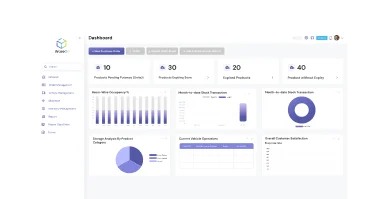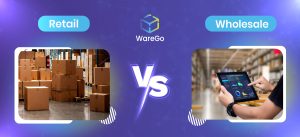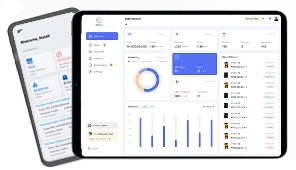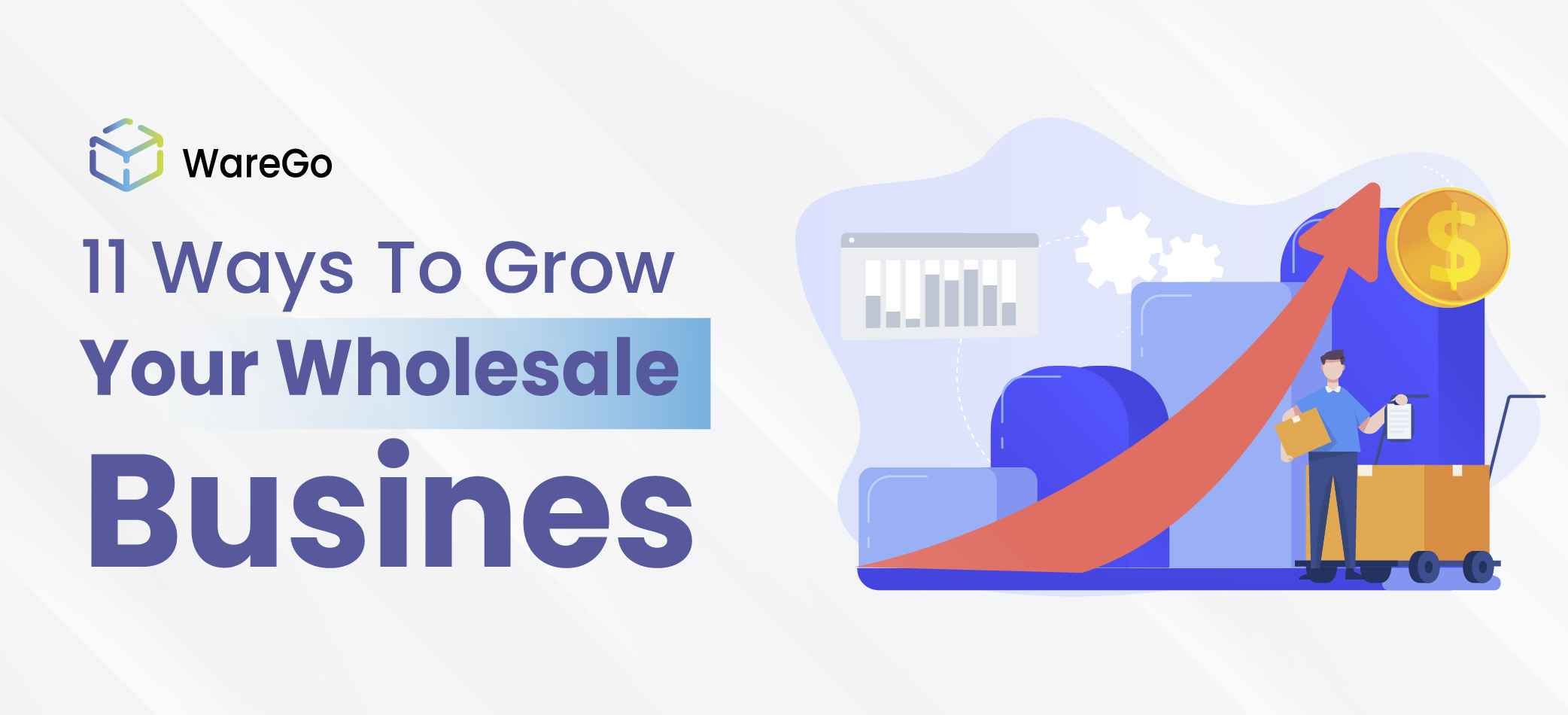
The wholesale industry is one of the fastest-growing sectors, valued at $53.8 trillion in 2024, and is predicted to reach $57.73 trillion by the end of 2025. This immense growth increases business opportunities but also increases the competition.
Most of the revenue is generated by big companies and brands, and small business owners struggle to grow due to outdated strategies. Growing your wholesale business in 2025 requires more than just purchasing items in bulk and reselling them to retailers.
To grow your business, you must consider why retailers would choose your business over thousands of other wholesalers. You can make your brand stand out in several ways, including building a strong brand, optimizing product pricing, improving inventory control, utilizing wholesale inventory management software, and fostering strong relationships with both customers and suppliers.
Whether you are a small business owner trying to grow your hard-earned business or looking to start a wholesale company and researching how to make it stand out, this guide will provide you with 11 proven ways to grow your wholesale business, utilizing modern strategies and a sales-focused approach tailored for the evolving market of 2025.
WareGo provides an automated, cloud-based, and modern solution for all your inventory management needs.
Click HereTable of Contents
Top 11 Best Practices to Grow Your Wholesale Business
The wholesale industry is full of opportunity, but growth doesn’t happen magically, it takes intentional action and thoughtful planning. To help you move forward, we’ve compiled the tips and best practices every wholesale business should follow:
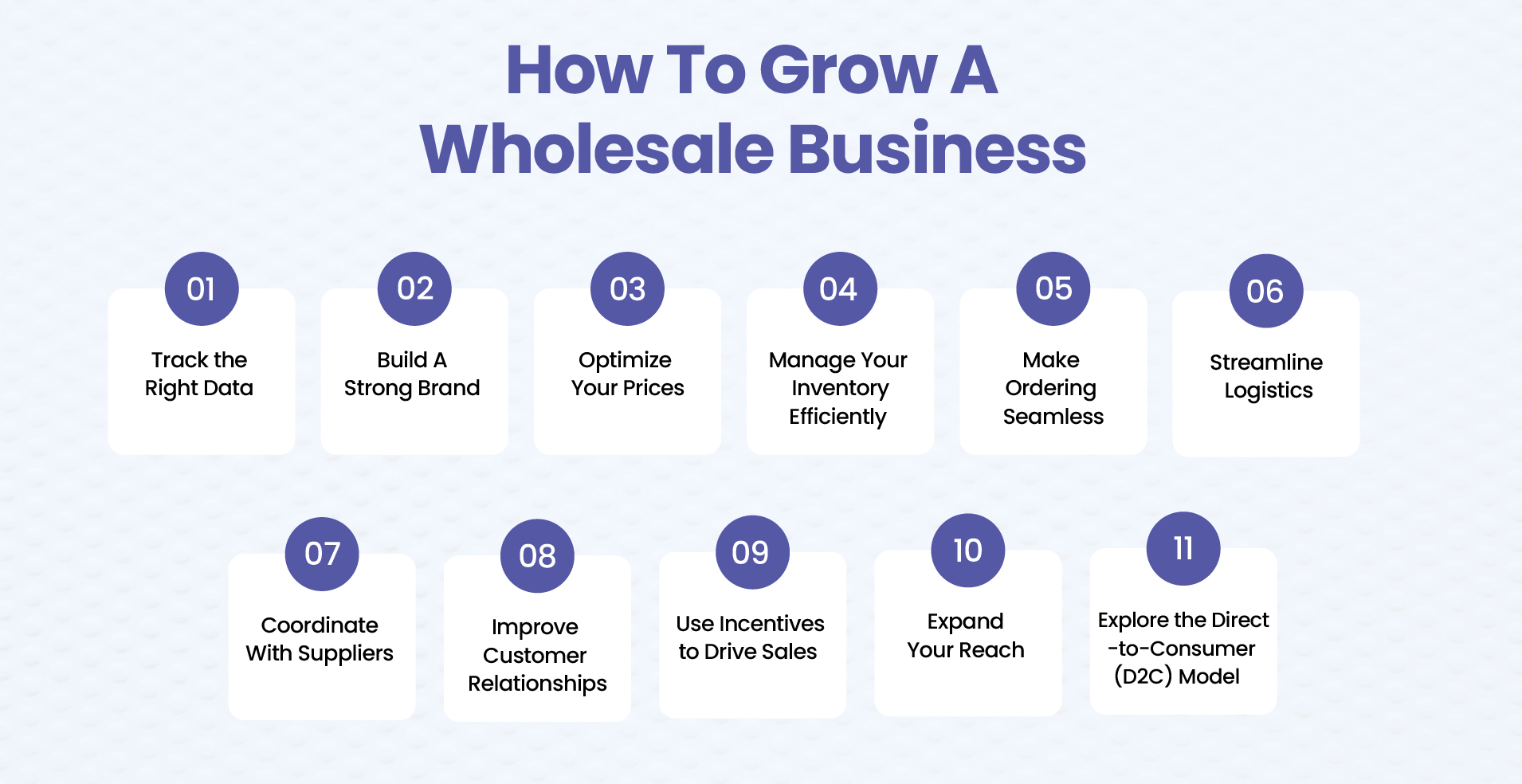
1. Track The Right Data
Growing your wholesale business in 2025 requires more than just trusting your instincts; it requires having concrete data reports and analytics to make informed decisions. You can’t simply buy a product and hope it sells; you must track what sells and how quickly, then invest more in profitable products, increasing efficiency and generating much-needed profit.
With the correct data, you can identify customer behaviors, demand patterns, sales trends, and inventory movement, giving you a genuine competitive edge over others.
Set Your Sales Goals and Budget
Set clear and measurable goals, don’t make vague or unachievable goals such as “I want my business to grow” or “I want my business to be the biggest in the United States”, setting realistic and measurable goals such as “I want my business to grow this much by this time” will help you plan smarter and remain focused.
Allocate a specific budget for your plans, whether they aim to double revenue, increase market share, or retain existing users. Include all relevant costs, such as logistics, automation tools, inventory management, marketing, and staffing, to ensure a comprehensive estimate.
Assign a realistic budget to your goals using past data and industry benchmarks. Monitor your spending regularly to ensure profitability and to detect inefficiencies. Without a proper goal, even a profitable business can remain stagnant for years. Like the saying goes, you can’t score a goal if there isn’t a goalpost.
Focus on Key Performance Indicators (KPIs)
Once you set your goals, use key performance indicators (KPIs) to track progress. KPIs tell you how your business is performing, whether it is stagnant or growing fast. The purpose of monitoring KPIs is to identify problems early and develop effective strategies to address them. Following are some KPIs commonly tracked in the wholesale business:
- Inventory Turnover Rate: The Inventory turnover rate indicates how quickly your inventory is sold and replenished. Having a high inventory turnover rate typically means that your products are selling efficiently, which reduces storage costs and the risk of dead stock. By tracking the inventory turnover rate, you can make smart decisions about ordering and product management.
- Order Fill Rate: The order fill rate measures the frequency at which customer orders are fulfilled. Having a low order fill rate means major operational bottlenecks, such as running out of stock. A low fill rate leads to lost sales, eroded customer trust, and a poor user experience.
- Customer Retention Rate: Wholesale businesses rely on repeat loyal customers. A single, reliable customer is far more valuable than multiple one-time buyers. Tracking your customer retention rate shows how willing customers are to use your services again. Better pricing, reliable fulfillment, and responsive support increase customer retention rates.
- Gross Margin per Product Line: This KPI measures which products in your inventory are more profitable. Different products contribute differently to your revenue. Using gross profit per product line, you can manage prices efficiently, focus on high-profit items, and reduce stock of products that hog space in your warehouse.
Utilize Tracked Data to Drive Growth
The purpose of tracking data isn’t to fill spreadsheets and documents; it’s to implement it strategically to drive growth in your wholesale business. Once you track KPIs and other key metrics, use them to make data-driven decisions that enhance productivity and efficiency. If a product is not selling as well, consider ditching it and investing in a more profitable one. If some stock becomes obsolete, consider selling it in bundles with other products at a discounted rate.
2. Build a Strong Brand
Having a strong brand gives your business an identity. Especially in the highly competitive modern market, having a strong and recognizable brand can truly differentiate your business. Many companies that struggle to grow rely on repeat customers or word-of-mouth referrals to drive growth. Most users look beyond the price tag to prove that you are a reliable business that won’t disappoint them, and focus on building a reputation and a trusted name in their sector.
Promote Your Wholesale Brand
Promoting your brand is the best way to increase sales and grow your wholesale business. Invest more in marketing and publicity. Create a recognizable logo, select a color scheme, develop a slogan, and maintain consistent messaging. Once you repeat something enough times, people automatically start considering it familiar and hence trustworthy. Marketing has a proven positive impact on brand sales, as noted in research by the American Marketing Association.
Create a Website
Digitalizing your business is the go-to strategy to increase your presence in the wholesale market. Having a website can help your business reach potential customers who might just be browsing online, waiting for the right vendor. If your website is professional and easy to use, it can instill trust in the user. Make your website SEO optimized, include details about your business, mention case studies, show graphs and analytics, to show that your company is not just “another” wholesale business.
Identify The Right B2B Sales Platforms
Instead of relying purely on your website, find the right platforms that facilitate business-to-business (B2B) sales in your sector. For a wholesale business, look for platforms that provide detailed statistics, allow bulk ordering, include real-time location tracking, customer support, and scheduled orders. The right platform can streamline your work while making it easier for clients to make a purchase.
Join a Wholesale Marketplace
Just as you go to a convenience store to buy products instead of going to the individual manufacturer, buyers go to a wholesale marketplace to find suitable wholesale vendors. Wholesale marketplaces charge a commission on sales but also divert traffic to your business, simplify logistics, and provide access to retailers who may be seeking new suppliers, driving much-needed growth.
Use Ecommerce Platforms
Going a step further and using an ecommerce platform can give you a competitive edge in the wholesale market. You can enhance your presence with your e-commerce store while maintaining complete control over branding, pricing, and customer experience. With a proper ecommerce store, you can provide a seamless experience to both retailers and other wholesalers.
Advertising Campaigns
Advertising campaigns are one of the most effective ways to promote your brand, directly driving growth in your wholesale business. Partner with other prominent companies, sponsor popular events and festivals, and run ads on billboards, social media platforms, and television channels. Advertisements are the king of publicity; they make the audience familiar with your brand and put your business in front of millions of consumers.
3. Optimize Your Prices
When managing prices, it’s essential to strike a balance between maintaining safe profit margins and offering competitive prices. If you hold high-profit margins, users might turn away to other vendors that offer better prices. However, if you provide extremely low prices, you might barely break even on your investment.
You can track metrics such as cost, buyer demand, and industry benchmarks to determine a reasonable price that won’t compromise your profit margins. Develop a sales model that attracts new customers while supporting the growth of your wholesale business.
Moreover, you should charge for shipping appropriately. Many vendors charge a flat fee for shipments, believing it will generate more revenue from small shipments. However, in reality, they lose more in the long run due to far-away shipments than they make from close ones.
Shipment charges should be dynamic, taking into account several factors, including distance, shipment weight, and shipment speed. Communicate shipment charges openly with the consumer, and ensure your margins support it. In 2025, having a reliable and fast shipment is essential, but it doesn’t mean you should incur losses to facilitate it.
WareGo offers cost-effective pricing plans tailored to your specific business needs.
Start For Free4. Manage Your Inventory Efficiently
The importance of inventory in wholesale businesses cannot be stressed enough. It is the backbone of your business and can significantly impact how much you earn or lose. A properly managed inventory can be a powerful tool, while a poorly managed one can serve as a bottleneck and leech away your profits.
Streamline Your Process
Streamline your operation process by using an advanced inventory management software. Use the one that integrates well with your sales channels, provides detailed analytics, facilitates wholesale operations, increases automation, and provides a cost-effective solution.
A sound inventory management system offers valuable features, including barcode reading, batch management, and demand forecasting. Shifting to an inventory management system from outdated methods ensures that your business runs smoothly, even as it grows and its complexity increases, while also cutting unnecessary expenses.
There are many inventory management software solutions available that claim to streamline operations. However, not all of these are fit for a wholesale business. A wholesale inventory management system must have the required functionalities, scalability, prices, and integration capabilities. You can also check out our detailed guide on how to choose the best wholesale inventory software.
Balance Inventory Management
Balancing inventory management means managing inventory efficiently. Instead of mindless hoarding, use sale trends, SKU velocity, demand forecasting, KPIs, and other metrics to understand how much stock you should keep, how often you should restock, and which products to invest in.
Poor inventory management can cause overordering, shortages, and obsolete stock. Utilizing inventory reduction strategies can significantly reduce the amount of cash spent on managing inventory, enabling you to focus on matters that matter financially.
5. Make Ordering Seamless
Having a slow and confusing ordering process can repel many potential customers, especially wholesalers who value time and efficiency. Having a seamless ordering experience means having an easy-to-use and self-explanatory user interface, as well as providing intelligent automation and personalization.
The process should be maximally automated. Instead of letting the buyer search for items, provide them with product recommendations by utilizing AI-powered algorithms and a personalized feed tailored to their location, interests, and past purchase history. Recommending products to users not only increases sales but also fosters a sense of trust, relationship, and personalization.
6. Streamline Logistics
Having reliable and efficient logistics is essential for any business. Especially for wholesale companies that process and ship large amounts of orders, even a small error can result in significant losses. Streamlining logistics means making your operation faster, reliable, and scalable.
Focus On Automation
The manual logistics process is often considered inefficient and is viewed by many as a thing of the past among successful businesses. They are prone to errors, more expensive, and slower. Automating the logistics workflow through label generation, shipment tracking, inventory updates, and order management enables a speedy and error-free workflow.
Outsource Order Fulfillment
Outsourcing your logistics to a third-party logistics (3PL) provider can be a viable option, especially if logistics is becoming a bottleneck. A reliable 3PL provider can manage warehouses, packing, and shipping more efficiently and at a lower cost, allowing you to allocate your precious time and resources to other priorities.
7. Coordinate With Suppliers
Having strong coordination with suppliers is essential to mitigate the risks of stockouts, shipment delays, and increase efficiency. Maintaining strong communication with a reliable supplier enables us to operate with reduced inventory levels, process orders efficiently, and decrease lead times.
Using applications and tools to track orders, delivery timelines, shipment location, and inventory levels can help you get in sync with your supplier. Communicate your supply needs with your vendor in advance, especially before seasonal events and festivals when demand typically increases, to avoid stockouts.
8. Improve Customer Relationship
Growing your wholesale business also means cultivating strong relationships with your customers. Making your service efficient, reliable, and affordable fosters trust among clients and allows you to build long-term partnerships over time, especially crucial for wholesale businesses that rely on a select few buyers. Strengthening customer relations not only boosts user retention but also attracts new users.
Improve Customer Satisfaction
Satisfied customers are more likely to come back to your business, sometimes even bringing more customers with them. You can increase customer satisfaction by maintaining consistent and reliable services and by ensuring that you supply only high-quality products. Asking for surveys and feedback, and taking them into account when making decisions, can make the client feel heard and valued, thereby increasing their satisfaction and loyalty.
Attend Trade Shows
Trade shows are one of the most significant ways wholesale businesses get clients. Face-to-face moments with customers increase their trust in you and make them more likely to order products from you. You can use trade shows to find new retailers and buyers or strengthen existing connections and accounts. Having a strong presence in trade shows builds brand reputation and positively impacts how you are viewed among clients.
Nurture Existing Wholesale Accounts
Focusing on new customers often leads businesses to abandon existing clients. Remember, a new person out there is a potential sale, while an existing customer is a guaranteed sale. Your existing customers are the most profitable for your business.
Engage with them by offering loyalty perks, discounts, and periodic meetings. This engagement with customers creates a sense of belonging in them and makes them less likely to switch to other vendors. You have to become “that friendly hardware wholesale guy” instead of “just another hardware wholesale business.”
Improve Customer Service
Having a responsive customer service is crucial for retaining existing users, building a better reputation, and increasing positive reviews. When customers encounter problems, they often become stressed, panicked, and feel isolated. Providing a comforting, responsive, and quick customer service can resolve their issues quickly and help them feel at ease.
You can use the in-game chat system, live agent calls, and AI chat support to resolve customer issues quickly. Moreover, never value money over loyal customers. If satisfying an existing customer means refunding, even if it leads to a loss, do it. A refund loss is short-term; a loyal customer can make you money in the long run.
Build Strong Wholesale Relationships
Wholesale businesses focus on a select few reliable customers; therefore, it is essential to maintain a strong relationship with them to ensure they remain loyal and don’t switch to other vendors. Understand the needs, business model, and preferences of every buyer. Give them better pricing, loyalty benefits, and customized solutions. Strong wholesale relations are built on mutual trust, respect, and value.
Book a free consultation with our experts at WareGo.
Get Started9. Use Incentives to Drive Sales
Incentives run everything in this world. Even those who perform good deeds, such as doctors or teachers, are often motivated by incentives. Offering a monetary incentive to use your services can significantly increase your wholesale business. Think of why customers would pick my business over others? Give them a reason, whether it’s deals, bundles, discounts, or something else. Providing users with an incentive will always be more effective than waiting for sales to occur.
Offer Bundles and Discounts
Providing strategic discounts can serve as a motivator for the user. When they see something is offered for less than its worth, they are more likely to make a purchase. However, discounts should not be a flat reduced price; they should be strategic.
Do you have an item that’s not selling well? Bundle it with a quick-selling item. Does obsolete stock increase your inventory expenses? Offer buy-one-get-one deals. When done right, discounts can not only attract new customers and retain existing ones but also let you increase sales, sell obsolete stock, and reduce inventory costs.
Start a Referral Program
A referral program rewards existing customers for referring new clients. Referral programs turn your customers into salespeople. You receive a new sale, and they receive a reward, which can be cash, store credit, or free items. Moreover, customers attracted through referral programs tend to trust your business more, as they are referred to it by a family member or friend.
Run Limited Time Promotions
Incentives don’t always have to be in the form of discounts or monetary compensation; they can also be in the form of recognition or praise. You can create urgency with limited-time deals, products, and offers. Whether it’s a seasonal event or a limited number of products with “first-come, first-served” offers, clients are more likely to place an order because they would fear the product or deal would run out.
10. Expand Your Reach
Many wholesale businesses often lack a market footprint, whether it’s due to fear of larger brands or simply a poor approach to expansion. Expanding your reach is a crucial step in growing a wholesale business. Expanding doesn’t mean just selling more; it means identifying and serving lucrative regions and markets.
Consider International Markets
Selling to international clients greatly increases your customer base. Build a reputable brand, identify regions with high demand for your product, and target high-profile clients in those areas. However, ensure that you follow their regulations and that the tariffs or taxes are manageable. Additionally, ensure that you adjust your prices to reflect local purchasing power, shipping costs, and applicable taxes.
Digitalize Your Business
Digitalizing your business is one of the best ways to expand your market reach and directly grow your wholesale business. Develop a website or application that functions seamlessly across multiple platforms to target a broad audience. Use wholesale marketplaces, B2B platforms, and eCommerce stores to attract as many customers as possible. Nowadays, online shopping and ordering have become a norm; hence, having a digital presence is of utmost importance.
Implement a Scalable Business Model
Once your wholesale business has a strong and reputable brand, you can focus on scalability. To ensure your business meets the increasing demand, use a scalable business model. Focus on a scalable warehouse management system, automation, and franchising. Scalability ensures that your business can adapt to growth and remain sustainable, rather than being overwhelmed by its success.
11. Explore the Direct-to-Consumer (D2C) Model
Even as a primarily wholesale business, you can still branch into a direct-to-consumer model, creating new revenue streams and increasing your margins. You can build a more consumer-facing brand by making social media accounts, investing in photography, and advertising. Selling products directly to consumers yields high returns, but requires personalization and care. Ensure you can effectively manage individual consumer orders before attempting a direct-to-consumer model.
Without a strategic business model that prioritizes wholesale accounts, scalability, and automation, it’s tough to grow your wholesale business. If you are serious about growing your wholesale business and want to learn more about common mistakes wholesalers and distributors make, check out our recent blog for a detailed insight.
WareGo is one of the most reputable Warehouse Management Systems in the United States.
Learn MoreBuild a Successful Wholesale Business Today
The wholesale market, albeit rewarding, is a highly competitive sector. With the increasing demand and the promotion of a consumer lifestyle, a wholesale business can go a long way, but only if it’s done right. Many wholesalers struggle to grow their businesses and perform in mainstream markets because they either plan improperly, fail to digitalize, or remain intimidated by larger brands.
However, using the methods explained in this blog, success for a wholesale business is guaranteed. Demand forecasting, building a recognizable brand, effective inventory control, and optimizing prices are methods that have consistently proven to drive growth in wholesale companies.
FAQs
How to get more wholesale orders?
To increase overall wholesale orders, focus on three key aspects: visibility, trust, and convenience. You can improve your business visibility by marketing through advertising campaigns, making your website, and using B2B marketplaces. Users trust businesses that offer transparent communication, fast customer support, and clear pricing. To make dealing with you as convenient as possible, focus on simple onboarding, a user-friendly portal, and a digital catalog.
Which wholesale business is most profitable?
A successful and profitable wholesale business deals in products with high demand and low overhead. Industries such as electronics, healthcare, beauty, industrial supplies, and daily-use products often offer high-profit margins and a lower risk of overstocking. However, high profitability and success stem from better planning, innovative strategies, and operational efficiency.
How to succeed in wholesale?
Success in the wholesale business stems from optimizing operations, fostering strong relationships with customers and suppliers, and staying current with evolving trends and market dynamics. A successful wholesale business focuses on delivering high-quality products at an affordable price reliably. Track performance indicators, user feedback, and customer reviews to make data-driven decisions, ensuring long-term success and profitability.
What are the processes of a wholesale business?
Just like any other business, wholesale operations consist of a series of processes that work together efficiently. First, the company buys products from a trusted manufacturer or supplier, since punctuality is essential for the wholesale business model. The business then manages and controls inventory, which includes counting stock, organizing warehouse space, and tracking equipment and packages. Then, once a retailer places an order, the business processes it and handles the packaging and shipping, sometimes in-house and sometimes through third-party logistics providers.
